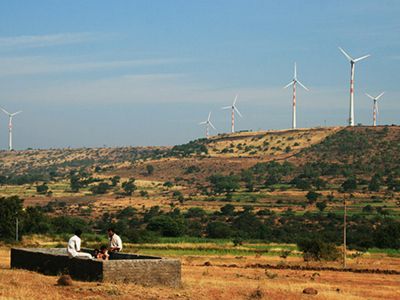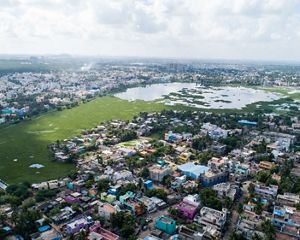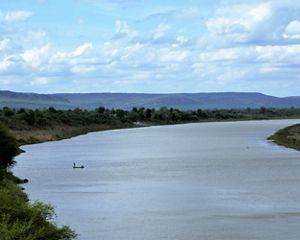
India—one of the fastest growing economies in the world today—understands that transitioning to a low carbon economy is fundamental to advancing human development, while also ensuring a stable climate and clean environment. Therefore, as part of its climate commitments under the Paris Agreement, India has declared that it wishes to achieve 40% cumulative electric power generation capacity from non-fossil fuel sources by 2030.
Simultaneously, India also wants to create an additional carbon sink of 2.5-3 billion tonnes of CO2 equivalent through large scale reforestation and restoration. By 2022, India’s target is to install Renewable Energy capacity of 175 GW.
However, achieving these goals requires land, which is a limited resource in a country that supports 1.3 billion people and close to 8% of the Earth’s biodiversity in less than 2% of the Earth’s land mass. Expanding renewable energy is urgently required, but if not sited properly, its massive footprint could have devastating impacts on ecosystems, biodiversity and local communities, while also undermining the goal of large-scale reforestation.
FINDING WIN-WIN SOLUTIONS FOR DEVELOPMENT AND NATURE
At The Nature Conservancy, we believe in creating science-based, win-win solutions that advance development while also conserving the environment. We are working with partners—Centre for Study of Science, Technology and Policy (CSTEP)—and in support of the governments of Madhya Pradesh and Maharashtra to bring forward a solution to the challenge of sustainably transitioning to renewable energy.
By strategically planning the use of land, India can ensure that renewable energy projects are set up in places with high potential for power generation, but which also avoid harm to nature, wildlife or people. We conducted a country-wide analysis which revealed that India would need close to 11.7 million hectares (85,000 km2) of land to meet its renewable energy targets by 2022—an area equal to the size of Austria or the state of Telangana in India.
If renewable energy projects were advanced with the singular aim of maximizing resource potential, it would threaten 1.16 million hectares of forest land and 5.06 million hectares of agricultural land by conversion.
Fortunately, this need not be the case if careful land planning is undertaken. In fact, our analysis shows that India has 12 times the land needed to achieve solar and wind energy goals by using degraded lands with low agricultural or wildlife value and reforestation potential.
We are translating this science into conservation action by adding information about important areas for biodiversity, carbon storage and ecosystem services into SiteRight—an online decision-making tool being used by Renewable Energy planners to site Renewable Energy (RE) projects. This updated tool will show decision-makers where to site RE projects without harming nature and wildlife. We are piloting this effort in the Central Indian states of Madhya Pradesh and Maharashtra—a region with high forest cover, highest population of tribal communities dependent on forests and 17% of India’s wild tiger population. As this region is in the centre of India, the massive infrastructure being developed across the country is criss-crossing through it. By demonstrating success here, we can scale up landscape-level planning across the country.
WITNESSING EARLY MILESTONES
This is the first such initiative in India and is receiving a positive response from both states—Maharashtra and Madhya Pradesh. Through consistent engagement, we have been able to highlight that pro-active landscape level planning that is grounded in science and economics will reduce delays for environmental clearances and associated costs, thereby accelerating renewable energy expansion.
As a result, the Madhya Pradesh Energy Development Corporation has agreed to use this upgraded tool to site future RE projects and has already requested support to identify suitable locations for mega-solar projects (>250MW). Similarly, the Maharashtra Energy Development Agency has also requested to identify RE sites on already disturbed lands such as roadsides and irrigation canal tops.
We will enhanced the SiteRight tool by adding criteria for social values, as well as perspectives that are relevant to RE developers and businesses, so its use becomes widespread among the business community.
PLANNING ALL FUTURE INFRASTRUCTURE BY DESIGN
India has ambitious developmental goals to achieve, beyond RE production. More than half of the infrastructure needed to support growth in India by 2030 is yet to be built! In just a decade, our roads, highways, railways, buildings and cities will grow exponentially. Where this infrastructure is placed, will decide the fate of India’s natural resources—its forests, rivers, agriculture, wildlife—as well as the lives of people who depend on these natural resources. Development and the environment don’t need to be conflicting goals. With proper land planning, the conflict can be mitigated.
Our goal is to enable infrastructure siting in ways that is a win-win-win: a win for development because it does not say “no” to infrastructure; a win for the environment because it protects natural resources and a win for businesses because it reduces the soft costs businesses face when communities protest against project siting which can delay projects.
Our scientific land planning approach will establish India as a global leader in decisively meeting its developmental goals while conserving its environment, and pave the way for other emerging economies.


